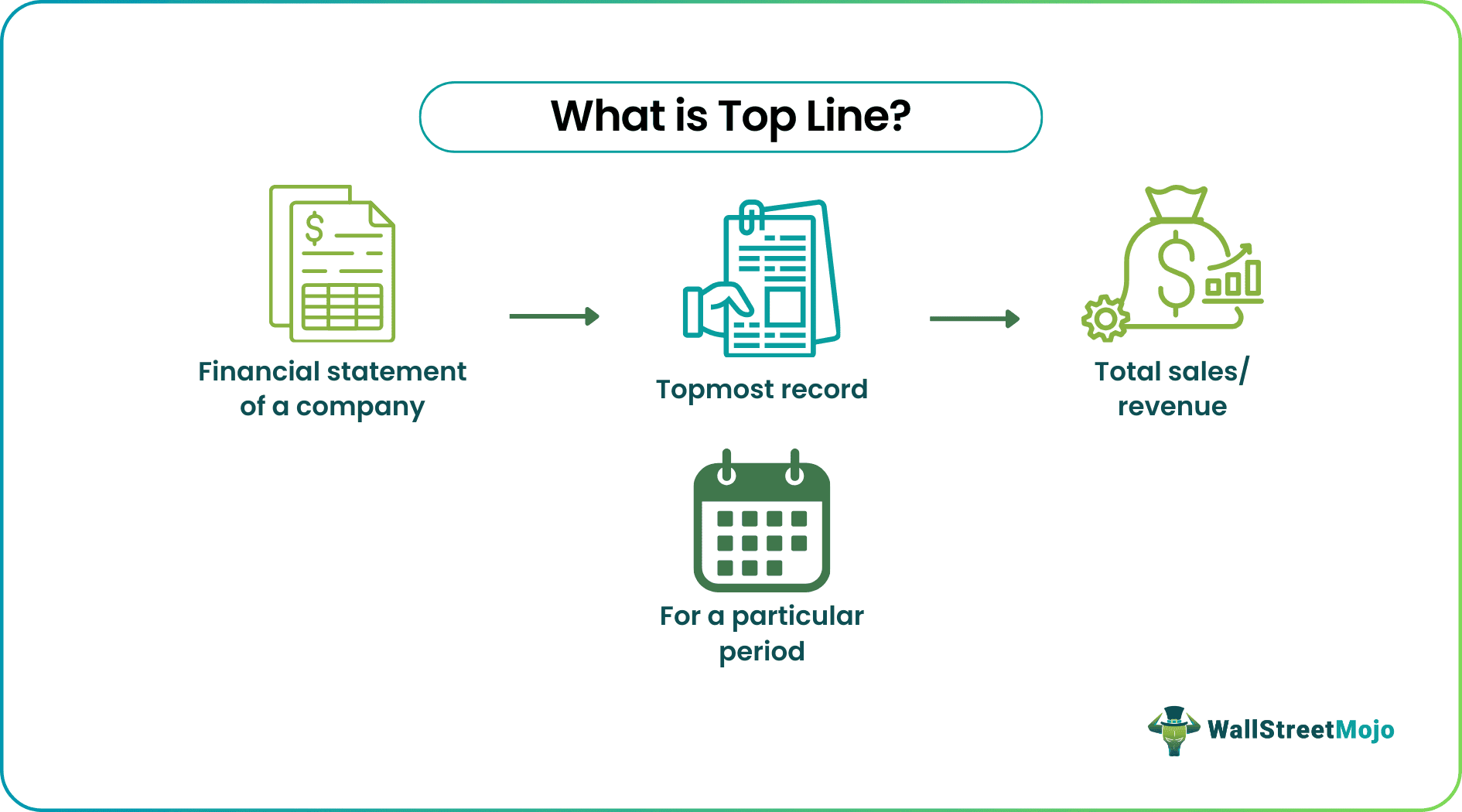Table Of Contents
Top Line Meaning
The top line refers to the revenue a business earns by selling goods or services and is reported in the income statement for a defined period (monthly, quarter, semi-annual, or yearly). Further, it is calculated after deducting the discounts given to the customer and net off the sales reversed during the year.

The top line revenue is the first thing to consider to assess the performance of any business and is referred to as “top” because of occupying the first spot in the income statements and other financial statements a business prepares.
Top Line Explained
Top line is the most important reference that companies make to understand how effective and productive they have been in a particular financial period. This section of the financial statement signifies the total sales and revenues generated by a business over a period.
For any entity or its stakeholders, the most critical item in the entire set of financial statements is the total sales. It is not the number of goods sold but the "amount" of total revenue generated from the entity's business. Revenue means quantity multiplied by the price charged per unit.
We treat the increase in sales growth as growth in the top line. Therefore, other income earned is not linked to the primary business and is not included.
Please see below some of the top companies as examples and what forms their topmost line.

Example
Let us consider the following example to understand what is top line and how it is calculated:
Income Statement: Amount in $ Million

We can calculate the topmost line as follows:

Explanation
- The topmost line of the entity is only “Gross Revenue” and not the “total income.” Other income may include rebates earned from suppliers, interest income on fixed deposits, write-back provisions, etc.
- Sales are increasing as the capacity utilization of the plant capacity is increasing. Also, the selling pricing per unit is increasing consistently.
- The bottom line (net profit) is increasing as reflected in the growth in net profit margin over the years.
- The company's major cost is dedicated to employee cost and marketing cost. Further, the cash profits are also increasing in line with the top line.
Importance
The top line drives the business. Lower sales mean a lower business scale, and higher sales mean a larger business scale. The business compares this scale to what competitors are achieving. As a result, it gets a chance to assess its measures and figure out ways in which it could make them more effective and fruitful. In short, such growth determinants become assessment means for businesses to excel and achieve.
- Everything in the financial statements is linked to the top line. Several employees working in a company are based on the amount of business to be handled. Their paychecks are dependent, again, dependent on the business.
- Companies keep raw material pricing relatively low to ensure higher gross margins. They also keep other direct overheads low to ensure sufficient gross profits.
- The indirect expenses are managed to ensure the sufficiency of operating profit margins (i.e., EBITDA margin). EBITDA is an important figure for an entity which means earnings before interest, taxes, depreciation, and amortization.
- An increase in sales should reflect the increase in EBITDA. If the EBITDA margin is steady and has not increased over the years, it means a company has reached the maturity stage of the business cycle. At this stage, innovations will only help the business to survive in the long term.
- Various ratios are linked to the top line, such as gross margin, net margin, efficiency ratios, EBITDA, EBIT ratio, and cash ratio. All such ratios reflect the growth of the entity over the years.
Top Line Vs Bottom Line
The Top Line and Bottom Line play a significant role in defining the achievements of a business through their financial statements. However, these two mentions in the statements differ in many aspects. Some of these differences include:
- The former revenue covers the total revenue that a business generates and is mentioned on top of the financial statement. On the other hand, the bottom line figure details the earnings after all deductions and is mentioned at the bottom of the financial statement.
- A business can increase the top line by introducing new product lines, spending more on advertising, and boosting the sale of products, while a business can increase its bottom line by controlling the expenses to be deducted from the total revenue.

